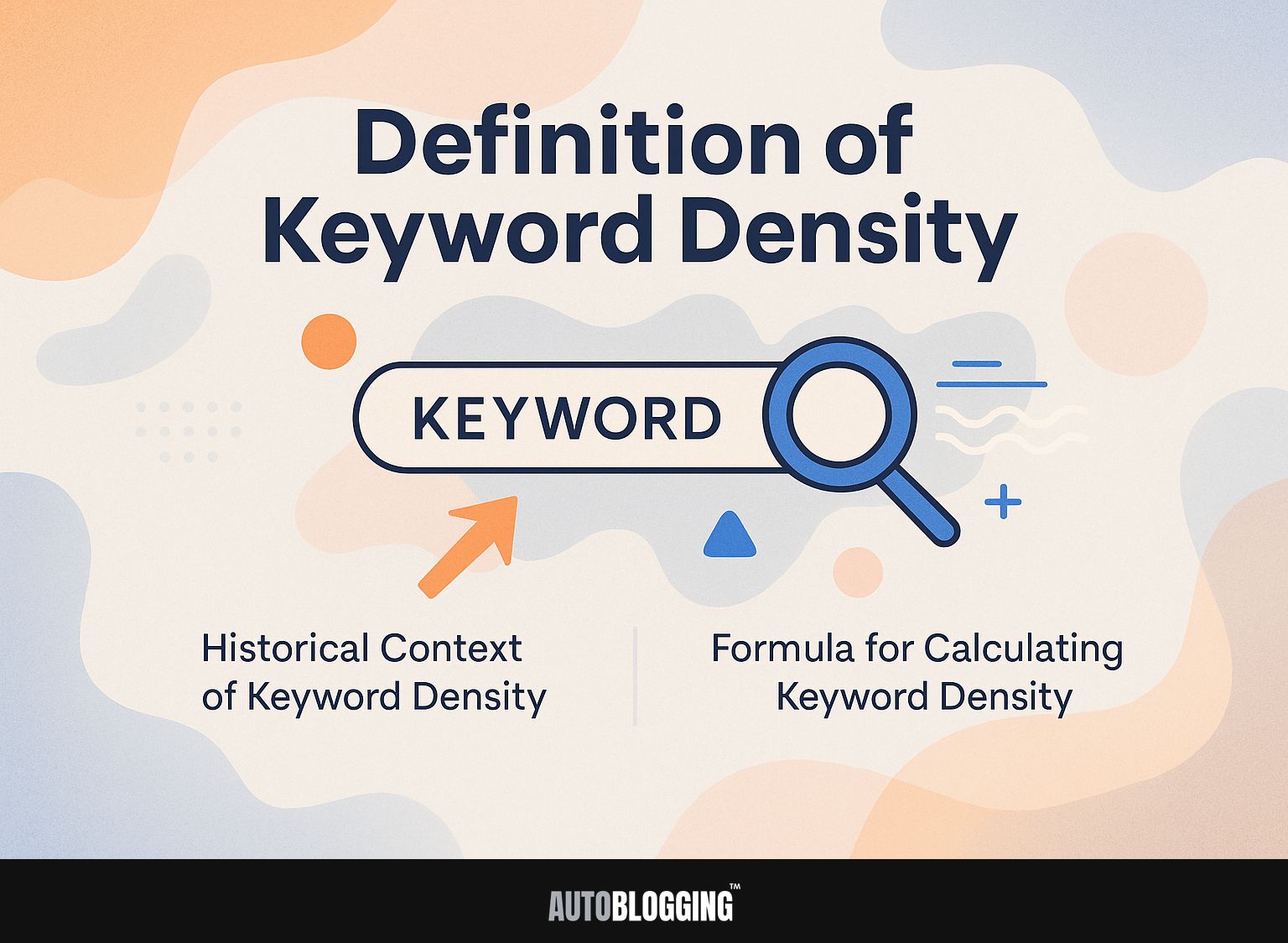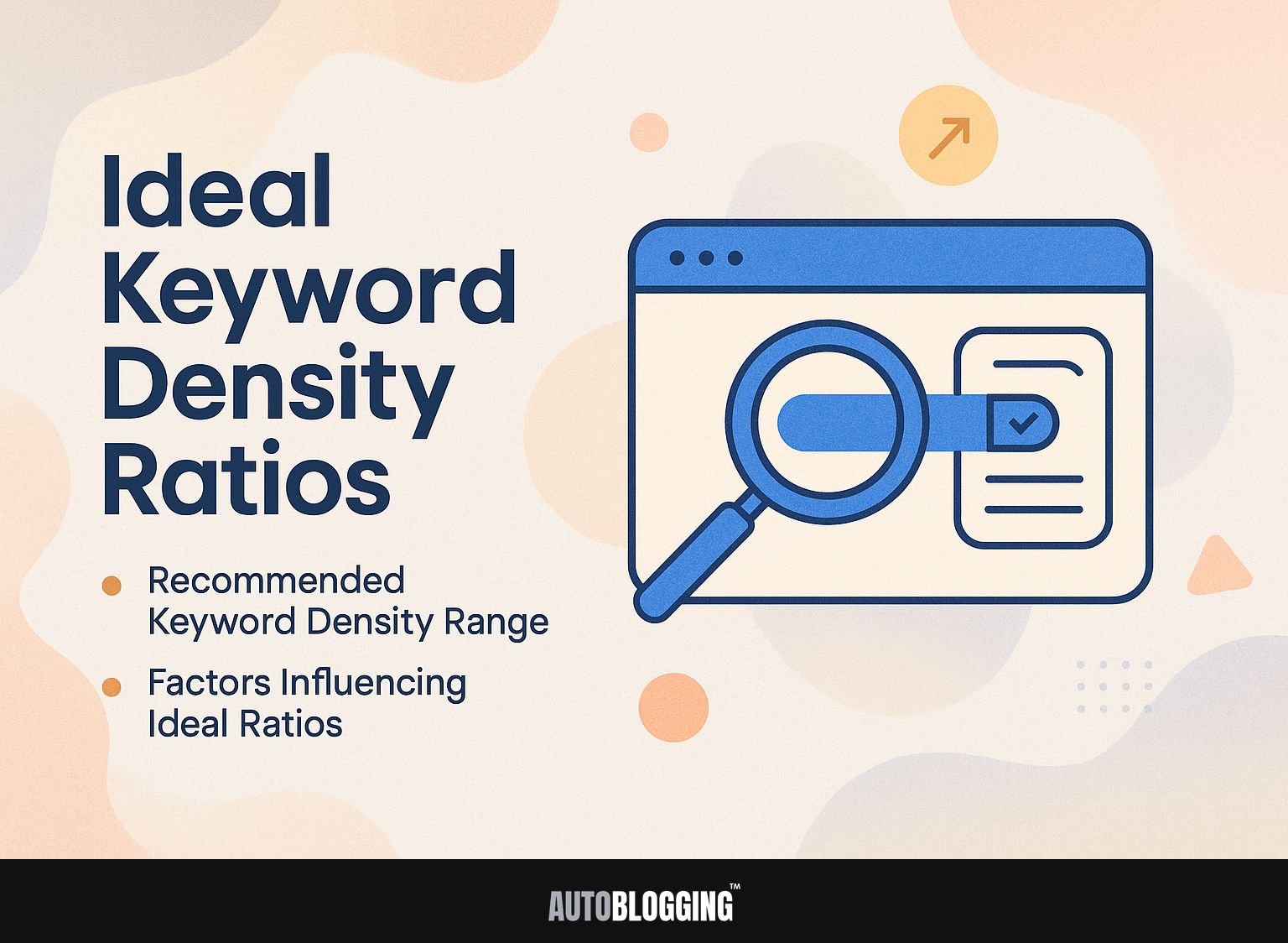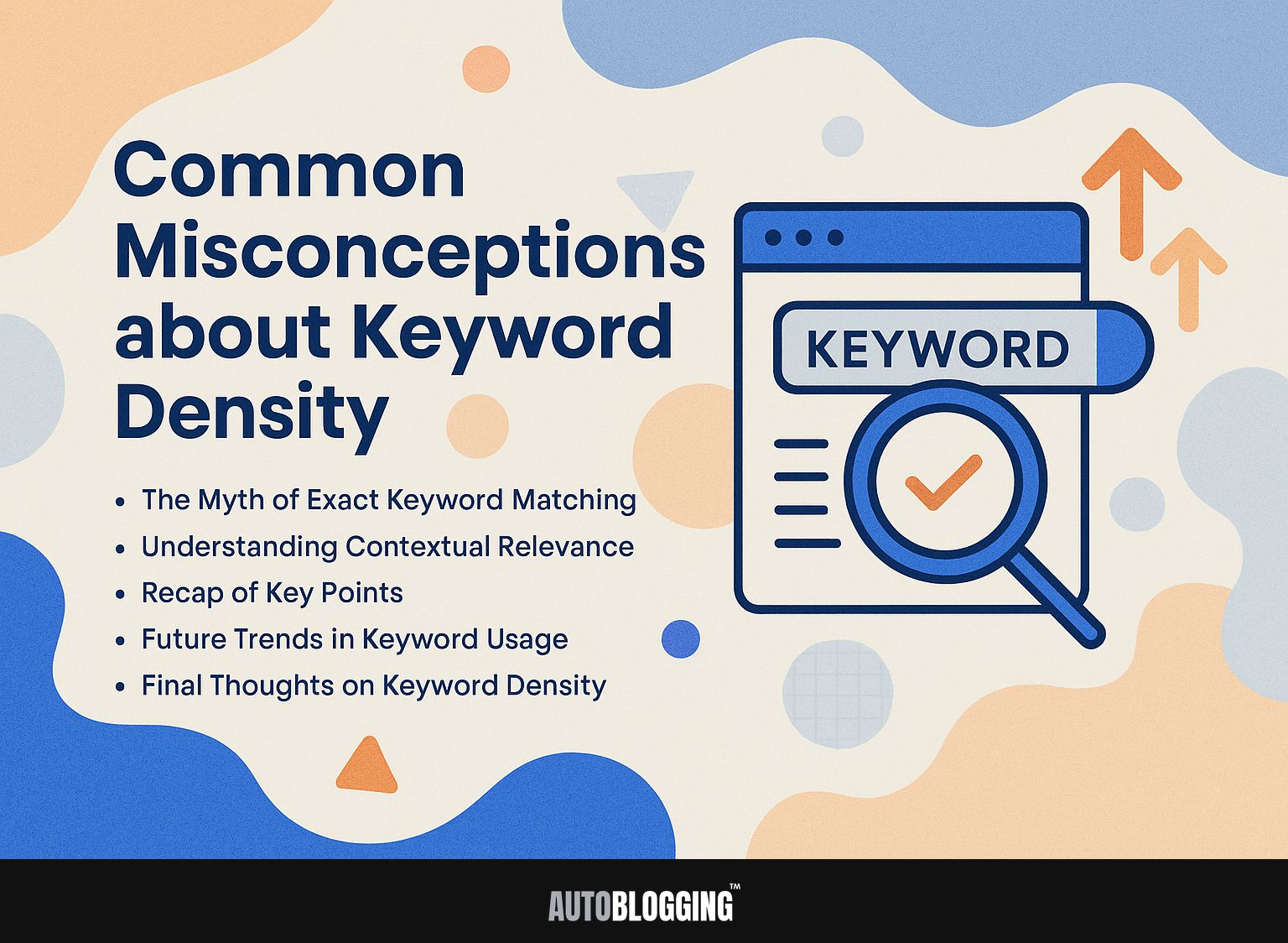
Knowing how often keywords appear in your content is important for making it work well. Google’s John Mueller highlights that having the correct balance can improve how search engines show your site. In this article, we’ll explain what keyword density is, look at the best ratios, and talk about how to measure it with tools like Semrush. You will learn to avoid keyword stuffing while creating content that connects with readers and improves your SEO.
Key Takeaways:
- Keyword density is how often a keyword appears in text, and it is important for SEO. (Introduction, 1.1, 2.2)
- The ideal keyword density ratio is between 1-3%, but it can vary based on factors like content length and keyword competition. (3.1, 3.2, 6.1)
- Checking how often keywords appear in content helps improve it. You can do this by hand or use keyword density tools. (4.1, 4.2, 8.3)
Contents
1. Importance of Keyword Density in SEO
Keyword density helps define how effectively keywords contribute to a web page’s ranking on search engines. Keeping a keyword density of 1-3% can greatly improve how well your content shows up in search results.
A study by Backlinko in 2020 found that pages within this range saw improved rankings, often because they provide informative content without keyword stuffing. If you’re interested in understanding the risks and how to avoid keyword stuffing, check out our detailed guide on keyword stuffing.
For instance, pages like HubSpot’s marketing blogs frequently use strategic keyword placements to achieve high SERP positions. By using important keywords and fitting them smoothly into titles, subtitles, and main content, such sites achieve a mix of easy reading and strong SEO that leads to more natural visitors.
1. Overview of Keyword Research
Effective keyword research is foundational for achieving optimal keyword density and improving overall SEO strategy.
To start, use tools like Semrush and Ahrefs to find main and related keywords. Start by entering a broad topic related to your niche; both tools will generate a list of keywords along with their search volumes.
Focus on selecting primary keywords with high search volume but moderate competition. Next, identify secondary keywords that complement your primary choices, ensuring they remain relevant to your content. This approach aligns with the principles outlined in our guide on what is keyword research, process, tools, and best practices.
A good practice is to aim for a keyword density of 1-2% throughout your content to maintain SEO effectiveness while providing value to your readers.
Definition of Keyword Density
Keyword density is the ratio of how often a keyword shows up in a text to the total number of words.
1. Historical Context of Keyword Density
The importance of keyword density has changed a lot since the early days of SEO. It was once the main focus, but now it involves a more detailed method because of algorithm changes.
In the beginning, SEO tactics heavily relied on keyword stuffing-overloading content with target keywords to improve rankings. This often led to awkward phrasing and diminished readability. Related insight: What is Keyword Stuffing: Risks, Examples, and How to Avoid It
As search engines advanced, the algorithms began prioritizing context and content relevance over mere frequency. For example, Google’s Hummingbird update emphasized semantic search, allowing for more natural language processing.
Today, effective SEO strategies emphasize producing content that is of good quality and engaging, using keywords in a way that feels natural. The focus is less on strict keyword density rules and more on improving how users experience the site, with an emphasis on longer content.
2. Formula for Calculating Keyword Density
To calculate keyword density, divide the number of times a keyword appears by the total word count and multiply by 100.
For example, if you have a 700-word blog post and the keyword ‘content marketing’ appears 14 times, the calculation would be (14/700)*100 = 2%. It’s important to keep keyword density balanced, ideally between 1-3%.
Too high a density can trigger penalties from search engines, while too low may affect your rankings. Regularly check your content with tools like Yoast SEO or SEMrush to make sure keywords are used well and make changes if needed.
Ideal Keyword Density Ratios
Finding the best balance of keyword use is important for improving content without losing quality or risking penalties.
1. Recommended Keyword Density Range
The recommended keyword density range typically falls between 1% to 2%, which balances optimization and readability.
Maintaining this keyword density effectively engages readers while satisfying search engine algorithms. For example, a blog centered on digital marketing can focus on keywords like “content strategy” without overstuffing.
Tools such as Yoast SEO help analyze keyword usage, ensuring you stay within this ideal range. By keeping an eye on your Google Analytics, you can see if posts with lots of information cause people to leave your site quickly. Adjusting your content based on how readers interact can improve how engaged they are and help your site perform better in search engines.
Successful blogs often employ these techniques, achieving organic growth through thoughtful content strategies.
2. Factors Influencing Ideal Ratios
Various elements, like what the content is about, who will read it, and what the user wants, can affect the best keyword frequency for a particular article.
For example, technical articles usually work well with a higher number of keywords, about 2-3%, to make the content clear and exact. In contrast, lifestyle content may function well with a lower density, typically around 1-1.5%, as it flows more naturally.
A tool like Yoast SEO can help assess and adjust your keyword density effectively. Always consider your audience’s familiarity with the topic; beginners might need more context, while experts may prefer concise language.
Changing your approach to match these details improves both readability and SEO results.
How to Measure Keyword Density
It’s important to measure how often keywords appear in content to improve it and make sure it follows SEO standards.
1. Tools for Measuring Keyword Density
You can use tools like Semrush and Yoast SEO to easily check and improve keyword density.
A comparison of popular keyword density tools reveals their unique attributes.
- Semrush, with a starting price of $119.95 per month, offers detailed analysis and information about competitors, perfect for those specializing in SEO.
- In contrast, Yoast SEO, available for free up to $89 for premium features, is a favorite among WordPress users due to its intuitive interface.
- Moz’s Keyword Explorer costs $99 per month and offers effective keyword tracking with search result analysis.
Choosing between these tools often depends on your budget and the level of detail needed for your SEO strategy.
2. Manual Calculation Methods
Manual calculation of keyword density can provide a quick assessment without relying on tools, ensuring accuracy.
To manually calculate keyword density, count the total number of words in your text along with the number of times each keyword appears.
For instance, if your text has 200 words and the keyword ‘SEO’ appears 10 times, the formula is (10/200) x 100, resulting in a 5% density.
The advantage of this method is that it lets you control your analysis exactly how you want. It might take more time than using tools like Yoast SEO or SEMrush, which offer thorough reports rapidly.
Use hands-on techniques to learn thoroughly, but think about using automatic processes to save time.
The Impact of Keyword Density on SEO
The number of keywords used can greatly affect SEO performance, affecting how high a page ranks and how easily it can be found in search results.
1. Keyword Stuffing vs. Natural Use
Overloading text with keywords can result in penalties, whereas using keywords naturally improves the quality and relevance of the content.
Search engines like Google have reported that pages engaging in keyword stuffing can face de-indexing, resulting in a drop in organic traffic by as much as 50%. For effective keyword usage, focus on incorporating 1-2 primary keywords naturally within your text.
For instance, in a blog post about healthy eating, instead of cramming the phrase ‘healthy eating tips’ repeatedly, write organically about various aspects of the topic while naturally integrating the keyword where it fits. This balance improves user experience while satisfying search algorithms.
2. Search Engine Algorithms and Keyword Density
Knowing how search engine algorithms assess keyword frequency is important for successful SEO strategies.
Over the years, search engines have shifted focus from mere keyword density to semantic search and user intent. Experts recommend analyzing user queries to determine the context behind searches.
Tools like Google Search Console help identify which queries bring traffic, allowing you to tailor your content accordingly. By requesting feedback or running surveys, you can find out what your audience wants, allowing you to make content that fits their needs.
Changing this involves including related keywords in your content in a natural way, making it more useful and pleasing for readers.
Best Practices for Using Keywords
Putting keywords in the right places is important to make content better and interesting for readers.
1. Balancing Keyword Density and Content Quality
Finding the right mix of keyword frequency and high-quality content is important for good SEO results.
To maintain optimal keyword density while enhancing content quality, focus on incorporating keywords naturally within informative, engaging content.
For example, instead of overloading your content with keywords, keep them between 1-2% by using phrases like `best marketing strategies’ or `effective SEO techniques.’ Use tools like Yoast SEO or SEMrush to check how often you use keywords and how easy your text is to read.
Look at top-rated articles that focus on user experience. These articles often place keywords in subheadings, bullet points, and related images, helping to make them clearer and more interesting.
2. Using Synonyms and Related Keywords
Using synonyms and related keywords can make content more relevant and avoid keyword stuffing.
To effectively identify synonyms, tools like LSI Graph help reveal related keywords typically used in your niche, aiding in content diversification.
Thesaurus.com is a great tool; type in your main keyword to find many options, which can affect both SEO and readability.
Using Google’s Keyword Planner can highlight search volume and competition for these terms, ensuring your choices align with user intent.
Using these synonyms in your writing makes your SEO better and offers a more interesting read, matching with Google’s goal for useful and related content.
Common Misconceptions about Keyword Density
A lot of confusion about keyword frequency often leads to poor SEO tactics and ineffective content plans.
1. The Myth of Exact Keyword Matching
The belief that exact keyword matching is necessary for SEO success is a debunked myth in modern content strategies.
Using different keyword forms makes content more relevant and matches what people are looking for. For example, instead of focusing solely on “running shoes,” consider terms like “best running shoes for flat feet” or “lightweight jogging sneakers.”
Tools such as SEMrush and Ahrefs can help identify these variants by analyzing related searches and user queries. Successful pages often use long-tail keywords. These keywords are aimed at specific groups and usually face less competition, which helps improve the possibility of achieving higher rankings.
2. Understanding Contextual Relevance
The importance of using the right keywords in context affects how content should be organized to best engage users.
To use relevant context successfully, start by knowing what your audience wants. Structure your content to answer specific questions they may have.
For example, if targeting `best running shoes’, include sections that compare materials, durability, and user reviews. Use tools like Google Search Console to find possible keywords, and include them naturally in headings and throughout the text.
This method improves SEO and makes your content interesting and useful for readers.
3. Recap of Key Points
Recapping the essential points about keyword density reveals its significance in shaping effective SEO strategies.
Using a keyword density of about 1-3% helps your content get found easily while still being easy to read. To do this, start by researching keywords. Use tools such as Google Keyword Planner or SEMrush to find terms related to your area.
Next, use those keywords naturally in your content, especially in headings, the beginning, and the end. Consider using variations or long-tail keywords to avoid overstuffing and maintain a natural flow.
Regularly analyze your content’s performance in search rankings to adjust your strategy as needed.
4. Future Trends in Keyword Usage
Upcoming trends in keyword usage will likely focus on improving how users interact with content and grasping the meanings of words.
As search engines evolve, they prioritize context and intent over exact match keywords. This means content creators should focus on long-tail keywords and question-based phrases that align with user queries.
Tools like SEMrush and Ahrefs can help identify these user intent keywords. Using semantic SEO practices, like including related terms and ideas in content, will improve relevance. Embracing AI search and emerging tools can further enhance your strategy by maximizing your SEO budget effectively.
For instance, if writing about ‘coffee brewing,’ incorporating terms like ‘French press’ and ‘cold brew’ can improve search visibility. Frequently refreshing content to match current trends will improve rankings.
5. Final Thoughts on Keyword Density
Final thoughts on keyword density highlight the importance of continuously updating SEO methods to stay relevant.
To improve your SEO strategy, frequently check how your keywords are performing using tools such as Google Analytics and SEMrush.
Start by assessing which keywords are driving the most traffic and conversions. Adjust your content accordingly: for instance, if a key phrase has dropped in search rankings, consider integrating synonyms or related topics to maintain relevance.
Use tools like Google Trends to watch for popular keywords in your area, so you can quickly adjust your plan to improve visibility and interaction.
Frequently Asked Questions
1. What is Keyword Density?
Keyword density means the percentage showing how often a specific keyword shows up in a document compared to the total word count in that document. It is an important metric in search engine optimization, as it helps determine the relevance and topic of a webpage.
2. What is the definition of Keyword Density?
The definition of keyword density is the measurement of how frequently a targeted keyword appears in a piece of content, expressed as a percentage. This is used to determine the relevance and topic of a webpage in relation to a specific keyword or topic.
3. What are ideal ratios for Keyword Density?
The ideal keyword density ratio can vary, but in general, it is recommended to keep it between 1-3%. This means the targeted keyword should show up 1 to 3 times for every 100 words. However, stuffing too many keywords can hurt SEO. It is best to focus on creating high-quality, relevant content rather than strictly adhering to a specific ratio.
4. How can I measure Keyword Density?
There are various tools available to measure keyword density, such as keyword density calculators or plugins for content management systems. These tools can analyze the content and provide a percentage for the targeted keyword. However, remember that these tools are just a guide and should not be the only measure of keyword density.
5. Why is Keyword Density important?
Keyword density is important because it helps search engines understand the relevance and topic of a webpage. It also helps with SEO, as having an appropriate keyword density can improve a website’s ranking for that specific keyword. However, remember that keyword density is just one aspect of SEO and should not be your main focus when writing content.
6. What are some tips for maintaining a healthy Keyword Density?
In order to maintain a healthy keyword density, it is important to focus on creating high-quality, relevant content. Make sure to use variations of the targeted keyword throughout the content and avoid overstuffing. It can also be helpful to use long-tail keywords, as they are more specific and can help with keyword density without overusing the main keyword. Finally, frequently check and refresh your content to keep keyword use balanced and useful for SEO.








